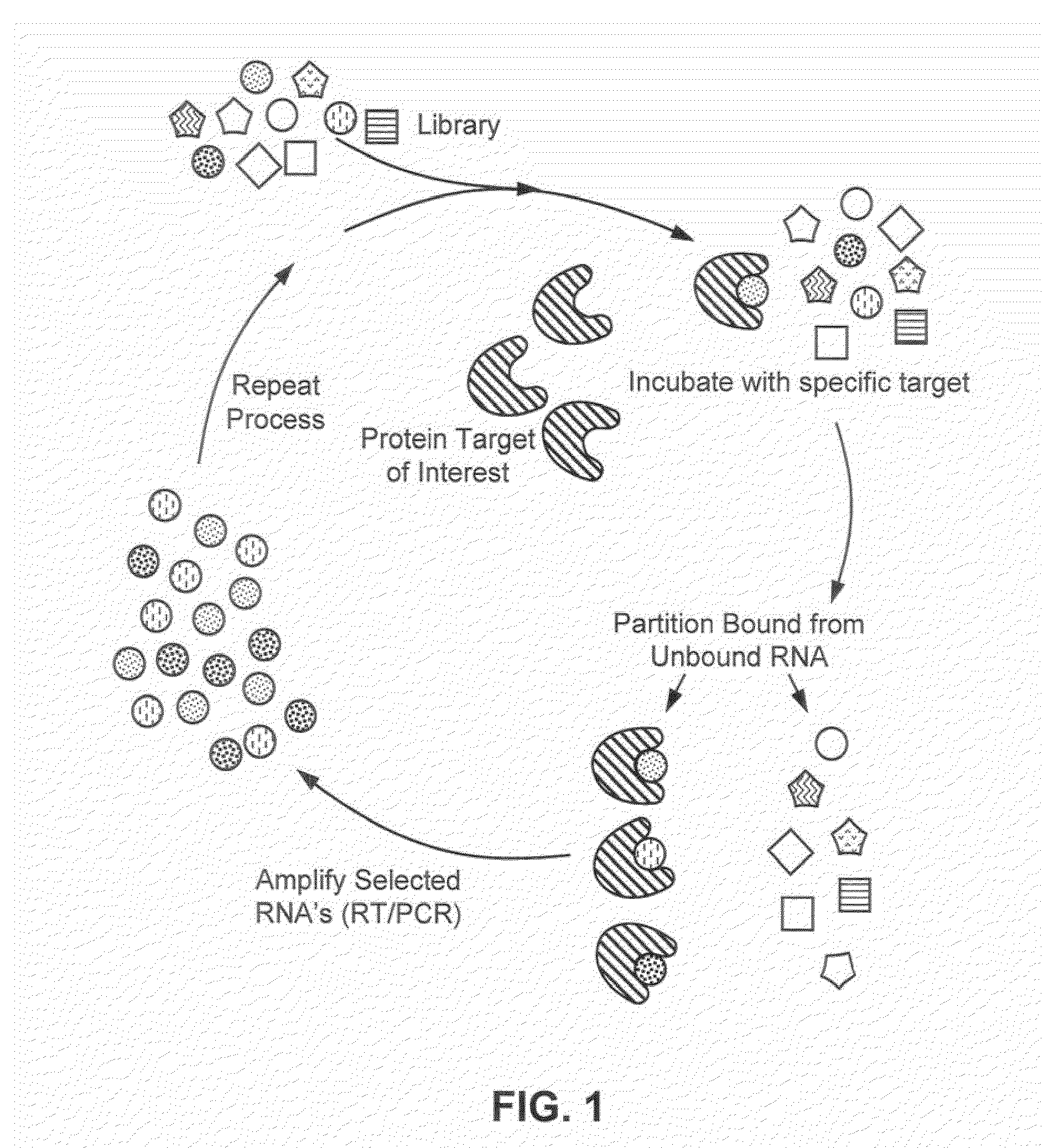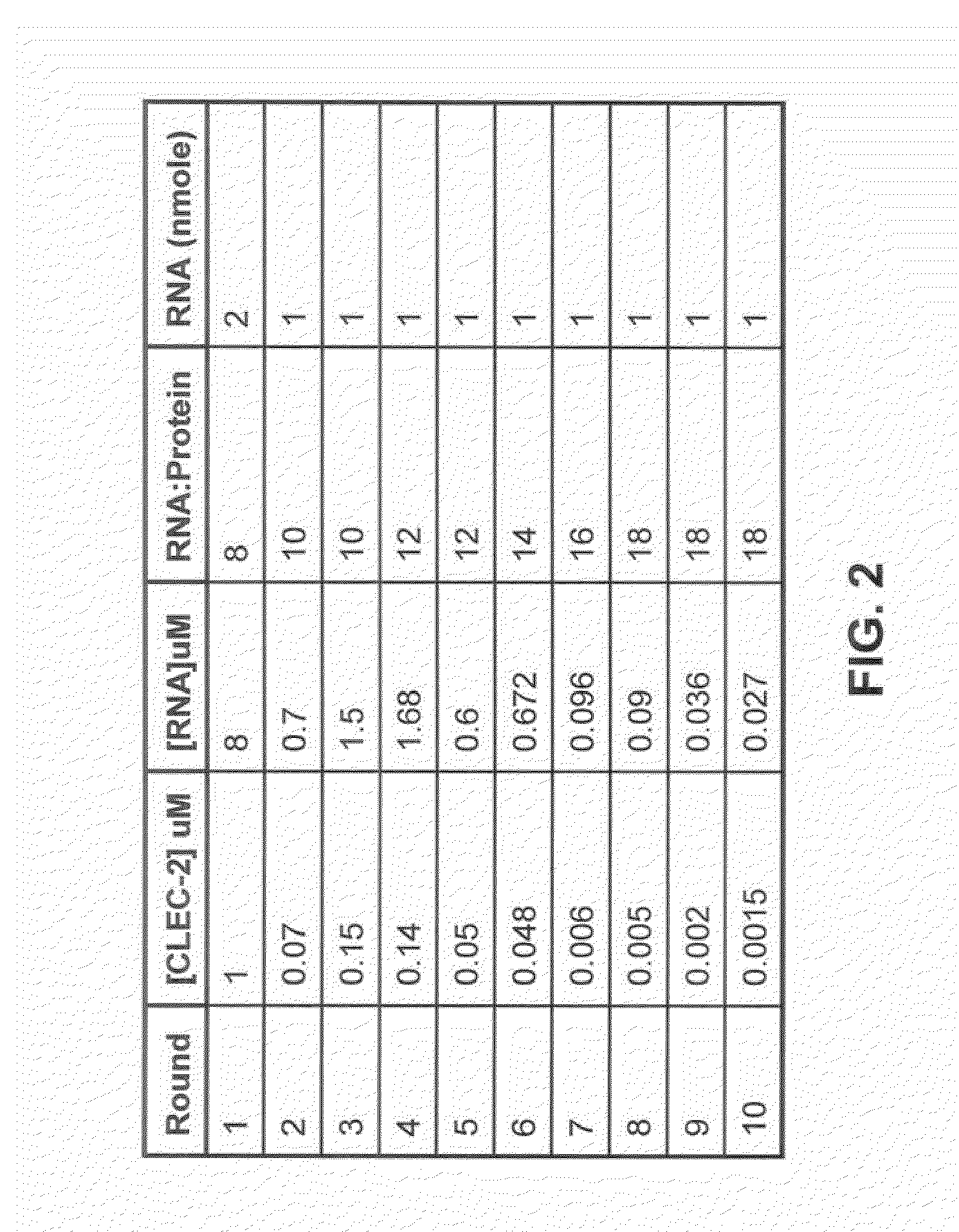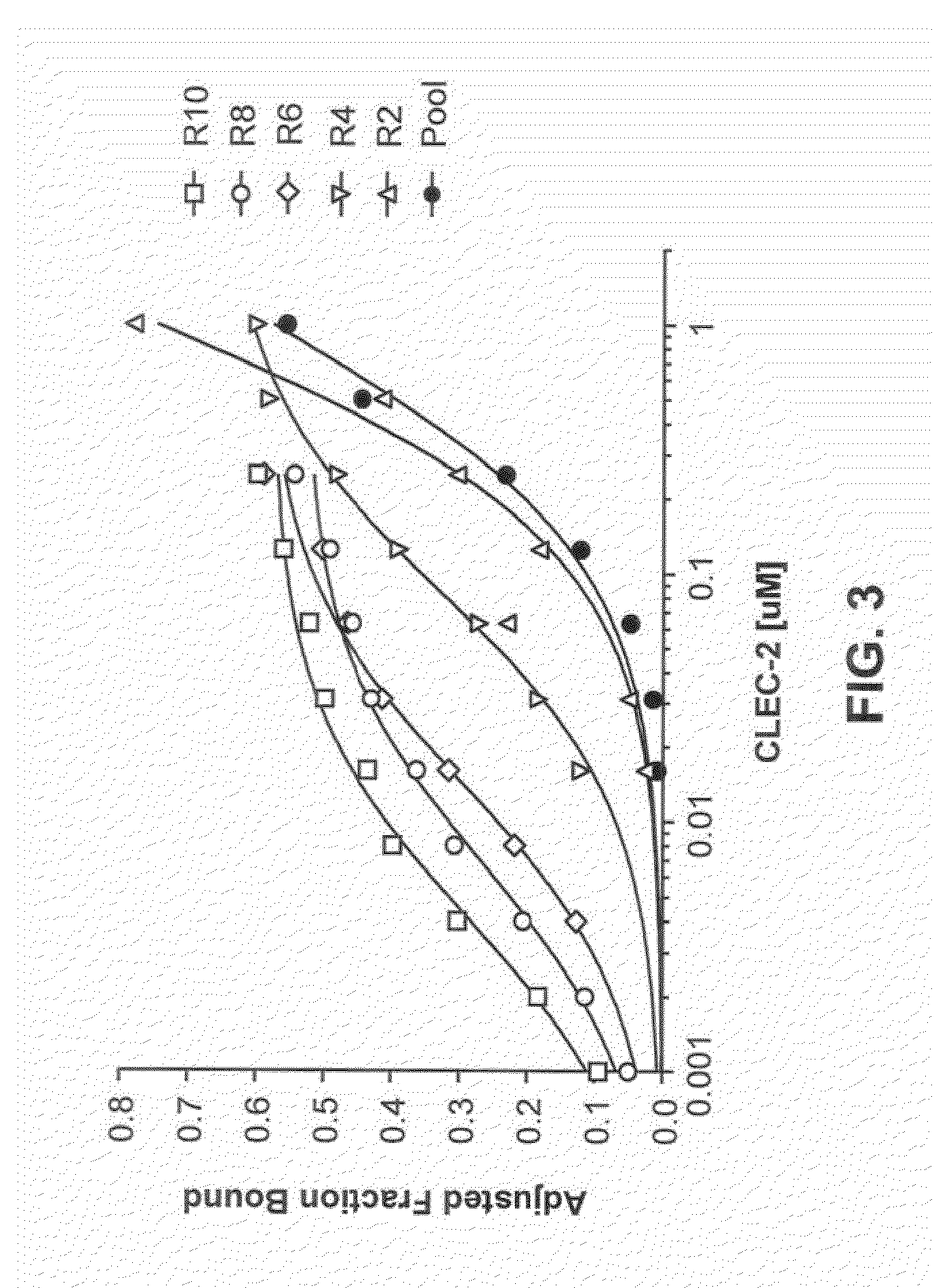Nucleic acid modulators of clec-2
a nucleic acid modulator and clec-2 technology, applied in the direction of instruments, extracellular fluid disorders, metabolic disorders, etc., can solve the problems of severe deficiency of vivo, and achieve the effect of reducing or eliminating the binding of the clec-2 ligand and enhanced destruction of the nucleic acid clec-2 ligand
- Summary
- Abstract
- Description
- Claims
- Application Information
AI Technical Summary
Benefits of technology
Problems solved by technology
Method used
Image
Examples
example 1
Identification of Nucleic Acid Ligands to CLEC-2
[0251]The SELEX method was used to obtain ligands which bind CLEC-2 as described and illustrated in FIG. 1.
[0252]Candidate DNA libraries were generated by heat annealing and snap-cooling 1 nmole of template DNA oligo and 1.5 nmoles of 5′ DNA primer ago. The sequences of the Sel2 DNA template oligo for designing the candidate mixture are: 5′-TCTCGGATCC TCAGCGAGTC GTCTG(N40)CCGCA TCGTCCTCCC TA-3′ (SEQ ID NO:4) (N40 represents 40 contiguous nucleotides synthesized with equimolar quantities of A, T, G and C), the 5′ primer oligo and 3′ primer oligo are, respectively, 5′-GGGGGAATTC TAATACGACT CACTATAGGG AGGACGATGC GG-3′ (T7 promoter sequence is in bold), and 5′-TCTCGGATCC TCAGCGAGTC GTCTG-3′. The reactions were filled in with Exo-Klenow, stopped by addition of EDTA to a final concentration of 2 mM, and extracted with PCI [phenol:chloroform:isoamyl alcohol (25:24:1)] and then chloroform:isoamyl alcohol (24:1). The extract was desalted, conce...
example 2
Sequencing and Identification of CLEC-2 Nucleic Acid Ligands
[0256]The final PCR products representing anti-CLEC-2 enriched ligand libraries from Round 10 of the SELEX experiments described in Example 1 were digested with EcoR1 and BamH1, cleaned using a purification kit, and directionally cloned into linearized pUC19 vector. Bacterial colonies were streaked for single clones and 5 mL overnight cultures were inoculated from single colonies. Plasmid DNA was prepared from single colonies using Invitrogen Pure link Quick Plasmid Miniprep kits and sequenced utilizing a vector primer. A total of 42 clones were sequenced, with 20 representing unique sequences. Each of these unique sequences was evaluated with respect to CLEC-2 affinity (according the methods in Example 1) and ability to rhodocytin-induced CLEC-2-dependent platelet aggregation (according the methods in Example 8). After analysis of the resultant data for the 20 clones, the ligand S2-20 was identified as a high affinity inhi...
example 3
Truncation Probing of Anti-CLEC-2 Ligand Sequence
[0259]Screening of S2-20 for potential secondary structure was conducted utilizing the mfold server (mfold.bioinfo.rpi.edu). A description of these methods is found on the server site as well as in M. Zuker (2003) “Mfold web server for nucleic acid folding and hybridization prediction.”Nucleic Acids Res. 31 (13), 3406-15 and D. H. Mathews, et al. (1999) “Expanded Sequence Dependence of Thermodynamic Parameters Improves Prediction of RNA Secondary Structure”J. Mol. Biol. 288, 911-940. A series of truncated compounds for the anti-CLEC-2 ligand S2-20 were generated (Table 2), and their affinity for CLEC-2 determined (Table 2). With the exception of RB 587, all truncates were transcribed in vitro from DNA templates. RB587 was synthesized on a Mermade 12 DNA / RNA Synthesizer with idT preloaded CPG. Binding data for the S2-20 full-length aptamer, the S2-20 T10 truncate, and RB587 are shown in FIG. 4.
TABLE 2S2-20 TruncationsSEQCloneKdIDNameRN...
PUM
| Property | Measurement | Unit |
|---|---|---|
| Fraction | aaaaa | aaaaa |
| Dissociation constant | aaaaa | aaaaa |
| Dissociation constant | aaaaa | aaaaa |
Abstract
Description
Claims
Application Information
 Login to View More
Login to View More - R&D
- Intellectual Property
- Life Sciences
- Materials
- Tech Scout
- Unparalleled Data Quality
- Higher Quality Content
- 60% Fewer Hallucinations
Browse by: Latest US Patents, China's latest patents, Technical Efficacy Thesaurus, Application Domain, Technology Topic, Popular Technical Reports.
© 2025 PatSnap. All rights reserved.Legal|Privacy policy|Modern Slavery Act Transparency Statement|Sitemap|About US| Contact US: help@patsnap.com



